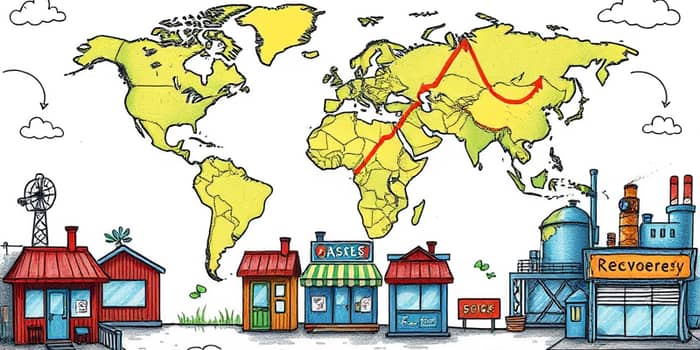
The global economy is at a crossroads. After the shock of a pandemic-era downturn and a wave of insolvencies, signs of recovery are appearing. Yet, many challenges remain as businesses and policymakers navigate a complex landscape.
This article examines how rising bankruptcy rates are beginning to ease even as economic growth picks up, explores the interplay between insolvencies and recovery, and outlines the risks ahead.
Below, we delve into the latest data and trends, offering insights that can help businesses, investors, and policymakers chart a cautious but optimistic path forward.
Since 2022, the world has experienced an ongoing surge in bankruptcies since 2022. In 2024, global bankruptcies rose by 10%, pushing figures 12% above the 2016–2019 average. However, forecasts suggest a deceleration, with projected increases of 6% in 2025 and 3% in 2026.
This moderation reflects not only a gradual market adjustment but also the impact of governments and central banks withdrawing emergency support. Companies that survived the initial shock now face new headwinds as liquidity conditions tighten and overdue debts come due.
Analysts note that the current phase is partly driven by an emerging after pandemic support measures expired, clearing a backlog of delayed filings. Despite this, the trend offers cautious optimism: the pace of insolvencies is slowing, even if absolute numbers remain elevated.
Global GDP growth per capita has shown a modest rebound. After a contraction of 3.9% in 2020, the world saw a 5.3% rebound in 2021. Growth then tapered to 2.2% in 2022 and 1.0% in 2023, before edging up to 1.8% in 2024 and 1.5% projected for 2025.
Productivity, however, has lagged, hovering below 0.5% in 2022–2023 compared to pre-pandemic rates above 1.5%. For less developed countries, the story is brighter: growth recovered to 3.8% in 2022 and is expected to reach 4.9% in 2025.
These figures illustrate a gradual economic recovery in key markets, but also highlight persistent structural weaknesses. High debt levels, supply chain disruptions, and mismatches between labor skills and demand continue to constrain a full-fledged rebound.
Bankruptcy dynamics vary markedly by region and sector. North America, Europe, and Asia-Pacific each face unique pressures, while some industries are more vulnerable than others.
Regional projections for insolvency growth:
North America saw a 73% surge in large corporate bankruptcies in Q1 2025, the highest quarterly figure since 2010. In Europe, Western markets face the risk of 1.1 million job losses from insolvency-related layoffs. Asia-Pacific expects an 8% rise in 2025 filings.
Insolvencies are more than numbers; they translate into real job losses. Globally, 2.3 million positions are at risk in 2025—120,000 more than in 2024—as firms in construction, retail, and services restructure or close.
Governments and central banks hold key levers:
Research indicates that a 1% reduction in credit supply could increase insolvencies by 3% in the US, 0.4% in Germany, 1% in the UK, and 2% in France over just three months.
The deceleration in bankruptcy growth—from a 10% jump in 2024 to 6% in 2025 and 3% in 2026—offers cautious hope. Yet, the recovery remains fragile, and several risks could derail progress.
Businesses should build resilience by diversifying supply chains, strengthening balance sheets, and investing in productivity-enhancing technologies. Policymakers must balance inflation control with sufficient liquidity, and coordinate trade policies to reduce uncertainty.
As the world transitions from crisis response to long-term growth, the interplay between credit conditions, policy measures, and market confidence will determine whether the current recovery can be sustained and insolvencies continue to slow.
By staying informed of these trends and adapting strategies accordingly, companies and economies can navigate the uncertain waters ahead and seize opportunities that arise as growth resumes.
References













